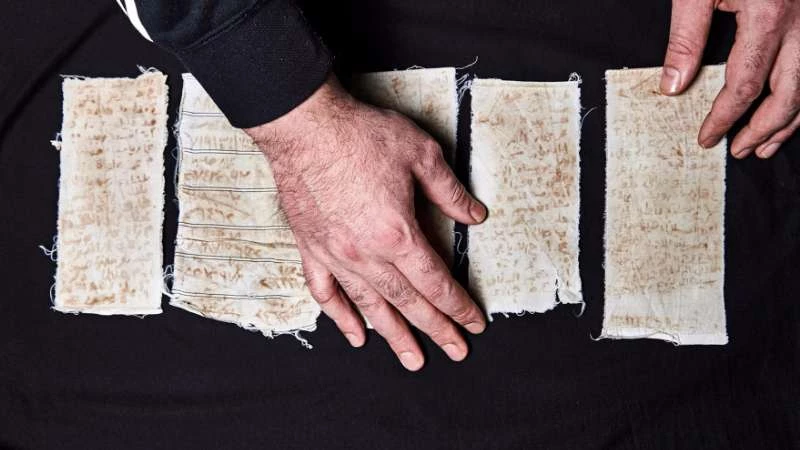Detained by Assad forces in February, 2012, for documenting arrests and torture by the military for the Syrian Centre for Media and the Freedom of Expression in central Damascus, Omari, now 37, was about to experience the brutal depravity of Assad’s loyal forces firsthand.
The psychological games began right at the outset.
Blindfolded and handcuffed, Omari and his fellow detainees were forced to kneel for hours in the dingy corridor of a secret Syrian prison and were told by one of their jailers to make their last requests before being executed.
But for Omari the execution never came.
Instead he “spent a year huddled with others in dark, stinking cells, where they were beaten and subjected to other, more sadistic acts of cruelty,” wrote journalist Matthew Campbell who interviewed Omari for an article published by The Sunday Times on February 26.
Not all of those Omari met on the inside would make it out alive and there were times when those still alive envied the dead.
As a human rights activist before his arrest, Omari knew that every detainee had family and friends on the outside waiting in vain for word of their loved ones, many of whom had disappeared without a trace.
As they agonized over the fate of their missing family members and friends, Assad continued to smile for the media and deny all knowledge of secret detention centers or any wrongdoing on the part of the regime.
“While Isis has trumpeted its barbarism to the world,” wrote Campbell, “the atrocities perpetrated in Assad’s secret dungeons have received less attention. Omari’s account is a rare and shocking glimpse into the horror.”
And the wounds inflicted by that horror were very much evident to Campbell as he watched Omari’s eyes well with tears while recalling events that have scarred his mind as well as his body.
But while still in prison Omari knew that the best way to keep from losing his mind — thus allowing his tormentors to win — was to use it doing positive things that would help his fellow prisoners as well.
Armed with the knowledge he had gained by studying English Literature at Damascus University, Omari taught simple English lessons to his fellow inmates.
These had to be conducted in whispers Campbell wrote, because talking amongst prisoners was strictly forbidden.
Omari had once had a job translating English subtitles of European films into Arabic so he also narrated the plots of European films and Shakespeare plays to his fellow prisoners.
“It was a way of taking us out of the hell we were in,” Omari told Campbell.
There were 57 men in the cell, but they had divided themselves into smaller groups.
Omari told Campbell how he had made friends with four other guys; Nabil Shurbaji, a journalist, Manaf Abazid, a student of German literature, a tailor named Sami and a carpenter named Farid.
“We knew each other’s’ names, but we also memorized phone numbers for each of our families so that if any of us managed to get out we could contact them,” he said..
Then Omari came up with a plan to go one better.
His plan was to somehow record the contact information for all of the prisoners being held in his cell so it could be used to contact their families if one of them managed to get out.
Omari told Campbell that his plan was not too warmly received by his friends in the beginning.
If they got caught they could be executed for treason and it was well known that some detainees were spies who ratted out their fellow prisoners in exchange for favors from the guards.
They would have to gather the information very carefully and maintain the utmost secrecy in compiling their lists
And with no paper or writing implements to use they would have to get creative — but Syrians have proven time and again that getting creative is one of the things they do best
“It was very dangerous,” Abazid told Campbell from Paris where he is now studying to be a computer programmer. “If the news that we were gathering names to smuggle out reached the jailers, it would be disaster for us.”
The five friends also agreed that if one of them was caught carrying out the names, he would take the fall alone and protect the others by not implicating anyone else.
Their rudimentary papyrus came in the form of strips of cloth Nabil Shurbaji tore from a shirt. He practiced writing on the cloth with an old chicken wing bone dipped in soup; but the soup was too thin to make lasting impressions
Eventually they came up with an ink composed of blood harvested into a plastic bag from Sami the tailor’s bleeding gums, rust and dirt that Shurbaji used along with a chicken bone stylus to record the names of 57 Syrian prisoners.
Using a piece of wire for a needle, Sami the tailor then sewed those pieces of cloth unto the collar and cuffs of Shurbaji’s extra shirt which they kept hanging on a peg on the wall waiting for the first among them to be released to put it on and wear it out of the prison.
As fate would have it, Omari was the first to leave and the shirt went with him.
Mansour Omari’s story can also be seen next month in Syria’s Disappeared: The Case Against Assad on Channel 4 in the UK.



التعليقات (0)